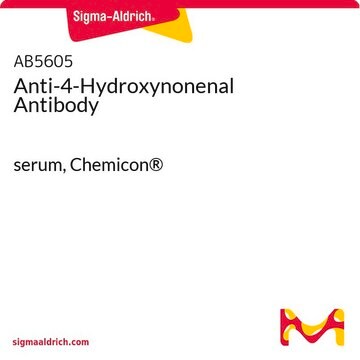07-214
Anti-dimethyl-Histone H3 (Arg17) Antibody
Upstate®, from rabbit
Synonym(s):
H3R17me2, Histone H3 (di methyl R17), H3 histone family, member T, histone 3, H3, histone cluster 3, H3
About This Item
Recommended Products
biological source
rabbit
Quality Level
antibody form
affinity purified immunoglobulin
antibody product type
primary antibodies
clone
polyclonal
purified by
affinity chromatography
species reactivity
human, vertebrates
manufacturer/tradename
Upstate®
technique(s)
ELISA: suitable
immunocytochemistry: suitable
inhibition assay: suitable (peptide)
western blot: suitable
isotype
IgG
NCBI accession no.
UniProt accession no.
shipped in
dry ice
target post-translational modification
trimethylation (Arg17)
Gene Information
human ... H3C1(8350)
General description
Specificity
Immunogen
Application
ELISA:
A previous lot of this antibody was used in ELISA. At dilutions greater than 1:2000 this antibody is specific for peptides containing dimethylated Arg17. No cross-reactivity detected with a peptide containing dimethylated Arg26.
Immunocytochemistry:
An independent laboratory showed positive immunostaining for CARM-1 specific methylation of Histone H3 in 3134 cells.
Epigenetics & Nuclear Function
Histones
Quality
Western Blotting Analysis: A 1:7,500 dilution of this antibody detected dimethyl-Histone H3 (Arg17) in Histone H3 treated with Histone-arginine methyltransferase (CARM1).
Target description
Physical form
Storage and Stability
Analysis Note
Calf thymus histone preparation, Acid HeLa cell extract.
Other Notes
Legal Information
Disclaimer
Not finding the right product?
Try our Product Selector Tool.
Storage Class Code
12 - Non Combustible Liquids
WGK
WGK 1
Flash Point(F)
Not applicable
Flash Point(C)
Not applicable
Regulatory Listings
Regulatory Listings are mainly provided for chemical products. Only limited information can be provided here for non-chemical products. No entry means none of the components are listed. It is the user’s obligation to ensure the safe and legal use of the product.
JAN Code
07-214:
Certificates of Analysis (COA)
Search for Certificates of Analysis (COA) by entering the products Lot/Batch Number. Lot and Batch Numbers can be found on a product’s label following the words ‘Lot’ or ‘Batch’.
Already Own This Product?
Find documentation for the products that you have recently purchased in the Document Library.
Our team of scientists has experience in all areas of research including Life Science, Material Science, Chemical Synthesis, Chromatography, Analytical and many others.
Contact Technical Service






